It is the reference point for all the world’s navigation systems and one of the most famous locations on Earth.
But scientists say that the geographical North Pole is on the move and could shift nearly 90 feet (27 metres) by 2100.
As the polar ice sheets melt faster in the warming climate, Earth’s mass is redistributed, slightly shifting our planet’s axis of rotation.
Although these changes might be small on the planetary scale, scientists warn they could cause havoc for satellite navigation.
As the Earth turns on its axis, changes in the oceans, atmosphere, and deep within the molten mantle cause the planet to wobble like a spinning top.
While most of the planet’s wobbles are regular and predictable, scientists from ETH Zurich have found that human-caused changes will soon outweigh the natural shifts.
Since satellites and deep space telescopes work out their position by referring to the Earth’s axis of rotation, any change in the North Pole could cause serious issues.
Lead author Dr Mostafa Kiani Shahvandi, now at the University of Vienna, told MailOnline this could cause inaccuracies ‘from a few metres to hundreds of metres’.
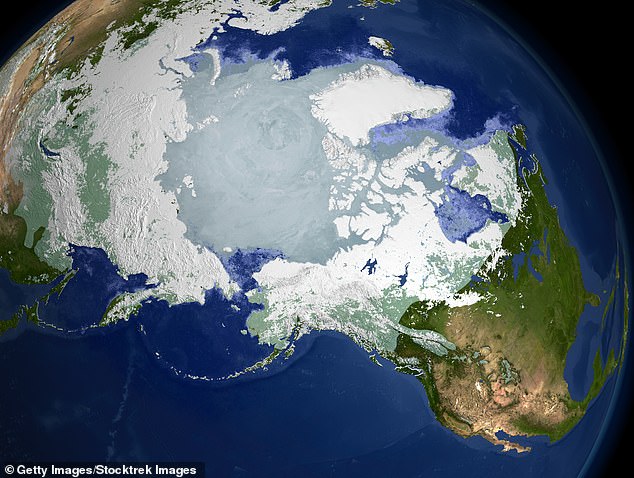
Earth’s North Pole is on the move and could shift by as much as 90 feet (27 metres) by 2100, according to scientists
Like anything spinning on its axis, big changes in the Earth’s distribution of mass cause it to shift on its axis.
Most of the time this is a normal and predictable process caused by factors such as regular cycles of ocean currents.
However, as the planet’s ice sheets and glaciers melt, this is causing a more rapid redistribution of weight than scientists have observed in the past, which is causing the pole to shift.
Dr Shahvandi and his co-author measured the movement of the poles between 1908 and 2000 and compared this with projections of ice melt to see how far they might move in the future.
In the worst-case scenario, in which greenhouse gas emissions are not reduced, the dramatic melting of the ice sheets will have moved the poles 89 feet between 1900 and 2100.
In a more optimistic scenario in which greenhouse gas emissions are reduced, the North Pole will still move as much as 39 feet (12 metres).
For now, human-caused effects aren’t moving the poles as much as natural causes.
The biggest source of polar shift currently comes from the Earth rebounding from the last ice age.
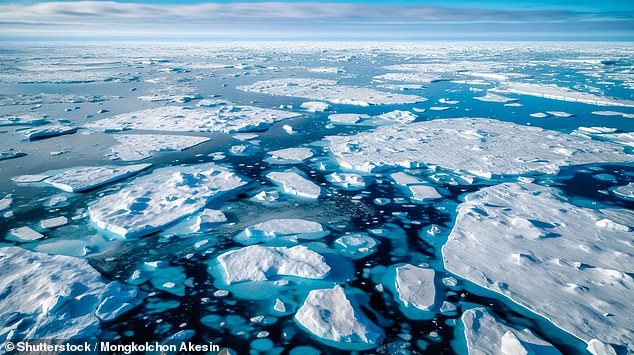
As the ice caps melt in the warming climate, Earth’s weight is redistributed around the planet. Like a spinning top, this shift alters the axis about which the Earth spins and moves the geographical North Pole

In the worst-case scenario (red) climate change could trigger the pole to move 89 feet between 1900 and 2100. In a more optimistic scenario (green) in which greenhouse gas emissions are reduced, the North Pole will still move as much as 39 feet (12 metres)
During the ice age, the Earth’s crust sunk down under the weight of glaciers and has risen up since they melted, redistributing the planet’s weight.
Even though the last ice age ended over 10,000 years ago, the rebound effects can still be seen in the natural shift of the North Pole.
However, in the near future the scientists say that human-caused climate change will overtake the ice age rebound as the biggest contributor.
Dr Shahvandi says: ‘Currently, the natural processes dominate polar motion, but if climate change continues and ice sheets melt more and more, then in the last decades of the 21st century the human-induced climate change will certainly dominate.’
Recently, scientists have warned that the world’s sea ice – the frozen ocean water at the North and South Poles – has plunged to a record low.
Last month, Arctic sea ice reached its lowest monthly extent for March in the 47-year satellite record.
Arctic sea ice covered an area six per cent smaller than average, marking the fourth month in a row when sea ice extents have seen record-breaking lows.
Likewise, Antarctic sea ice hit its fourth lowest monthly extent for March, standing 24 per cent lower than average.
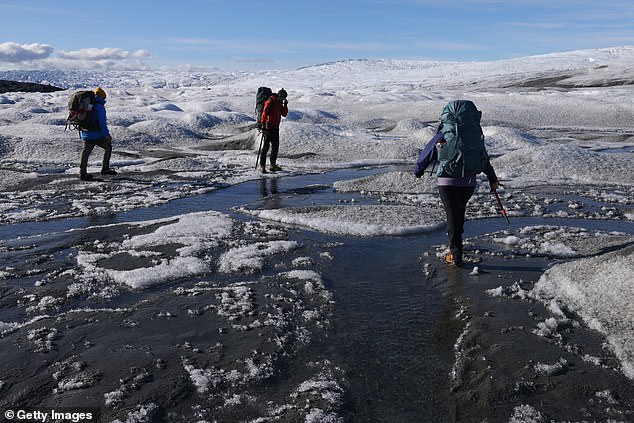
The biggest contributors to the shift were the Antarctic ice sheet and the Greenland Ice Sheet (pictured) which is melting at an accelerating rate
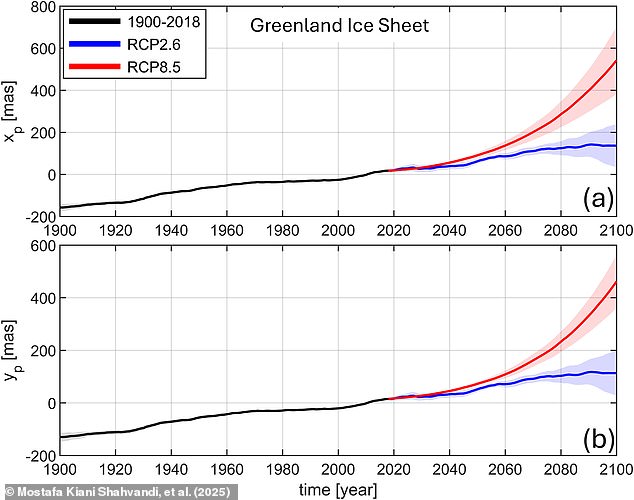
This graph shows how much the melting of the Greenland Ice Sheet could shift the pole on the X (top) and Y (bottom) axes by 2100. The red line shows the worst-case scenario in which emissions do not reduce and the blue line shows the more optimistic scenario
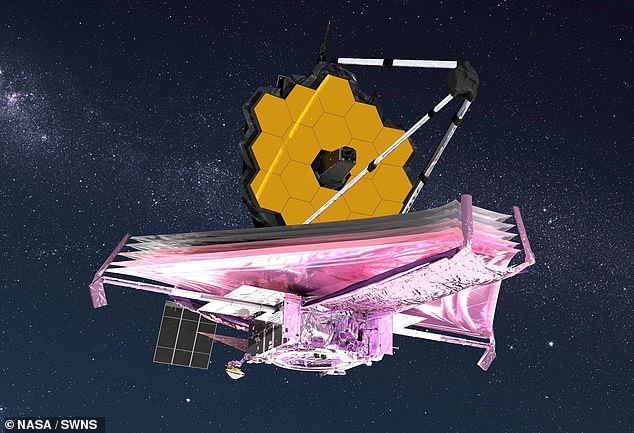
This could cause serious problems for satellite navigation and for space-based telescopes like the James Webb Space Telescope (pictured) which use the Earth’s axis as a reference point for navigation. This could cause errors on the scale of kilometres
The researchers discovered that the biggest sources of polar shift are the melting of the Greenland Ice sheet and the Antarctic Ice sheet.
If this change continues, it is likely to cause issues for the sensitive navigation systems of satellites and space telescopes such as the James Webb Space Telescope.
In their paper, published in the journal Geophysical Research Letters, the researchers write: ‘Since prediction of polar motion is crucial for applications such as spacecraft navigation and orientation of deep-space telescopes, the reduced predictability of polar motion under climate change might impact the operational accuracy of such applications.’
That would be bad for navigation systems here on Earth but even more perilous for spacecraft since it will become harder to work out their exact location.
Dr Shahvandi says this could create errors of ‘kilometres’ for spacecraft probing distant planets.














